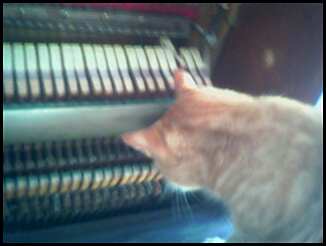Bass strings are also much more expensive than treble wire. Unless you favor using generic “universal” bass strings, you’ll need to mail them off to be duplicated. Add to that several return trips to tune the new string as it stretches out, and how much can you charge to replace one string? A lot of customers will think it’s your fault the sting broke, since you broke it, and they wont be too happy about getting charged a lot to fix something that wasn’t broken when you got there. I have mixed luck convincing people that it would have happened to any tuner; people are very suspicious of getting ripped off by service people.
So what can you do while tuning to avoid broken bass strings? While I can’t offer any foolproof techniques, I can suggest some techniques that help my chances of getting through without any breaking. Lowering the pitch first before raising it up can loosen a rusty tuning pin coil, and give the tension a little rest before getting cranked up. This can also avoid the possibility of turning the wrong tuning pin by accident; if the string is old and rusty, it won’t take much overstretching to break the string! I still break a bass string every now and then, but much fewer since I started always tuning down first.
I’ve found that often times, bass strings break more easily than the treble strings, so I am slower and more careful when tuning the bass of an older piano. If I am raising the pitch on an older piano and I am concerned about the bass strings, I will tune the bass several times, raising the pitch incrementally with each pass.

